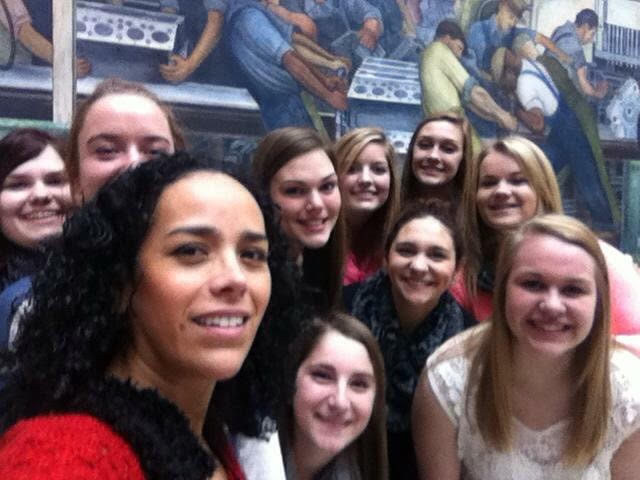Estamos cerca de las elecciones para presidente de los Estados Unidos y después de todos estos años, muchos amigos de México me preguntan que cómo es posible que el expresidente tenga la fuerza que sigue teniendo al día de hoy.
Yo tampoco lo entendía hasta que un día, me puse a escuchar el canal de noticias FOX y Newsmax, y entonces me empezó a caer un poco el veinte: Si la gente está escuchando noticias como que inmigrantes de México y Sudamérica están invadiendo el país, que las instituciones mentales de México están enviando a sus enfermos para Estados Unidos, que las fronteras están abiertas y que el gobierno actual está dejando pasar a delincuentes, que los mexicanos somos violadores, entre muchas otras; es obvio que la gente que solo consume noticias de estos noticieros va a creer que esto es cierto.
Como saben, en la política americana, los 2 partidos fuertes son: los Demócratas considerados liberales, algo similar al PRI en México; y los Republicanos que son los conservadores, algo así como el PAN.
Por años, estos 2 partidos y sus seguidores pudimos convivir sin juzgarnos los unos a los otros, pero en cuanto Trump entró en la campaña política y empezó a hablar de manera diferente, algo así como lo que hizo Vicente Fox en su tiempo de candidato, la gente empezó a creer que Trump era el salvador solo porque en su creencia, decir cosas que no eran políticamente aceptadas lo hacía más auténtico. En cuanto Trump se dio cuenta que los evangélicos y muchas otras religiones cristianas lo apoyaban, algo así como lo que hizo López Obrador al tomar la imagen de la virgen de Guadalupe y nombrar su partido MORENA, vieron en la religión un buen negocio para sumar votos y ganar las elecciones.
En mi opinión, que las personas religiosas sigan líderes como éstos es muy incongruente, porque ni Trump, ni López Obrador son religiosos, no asisten a la iglesia, y son hombres con una moral muy cuestionable. De este lado del muro, todos sabemos que Trump se ha divorciado 2 veces, les puso el cuerno a las 3 esposas. Tiene 91 demandas, la mayoría por mujeres que lo acusan de violación o abuso sexual. Fue encontrado legalmente responsable por el caso de abuso sexual de E. Jean Carroll y terminó pagándole 5 millones de dólares, entre muchos otros escándalos. Todo esto solo en lo que corresponde a su vida personal y moral.
¿Por qué gente tan religiosa lo sigue? Entonces escuché un podcast en donde entrevistaron al psicólogo e investigador Adam Mastroianni, en donde él decía que las personas no podrán recordar que les dijiste, pero pueden recordar cómo se sintieron cuando les dijiste lo que les dijiste que no pueden recordar. Entonces, ahí me terminó de caer el veinte. Estos personajes usan el miedo y la religión para controlar a sus seguidores, no importando el grado de escolaridad o cultura. Trump tiene seguidores de todos los estratos económicos, de escolaridad y raza.
Es muy natural que, si tienes miedo de una invasión, votes por quien te dice que va a cerrar las fronteras, por quien te dice que va a arreglar el sistema de inmigración y quien te va a hacer sentir seguro. Y no importa si todas estas son mentiras, porque también te ha hecho creer que le importas y que Dios lo ha enviado a salvarte de lo que los demócratas quieren hacerte.
Es natural también, que si estos seguidores no conocen el sistema de inmigración y lo que implica para una persona venir de otro país, que si nunca han ido a la frontera, y que si toda la información sobre esto viene del candidato en cuestión, ellos van a creer. No importa que sea una persona con una reputación y una moral espantosa, no importa que los psicólogos de las instituciones más reconocidas de Estados Unidos hayan dicho que es una persona inestable, narcisista y sin escrúpulos. Ellos lo seguirán porque actúan desde su miedo y desde la falta de información.
Por último, quiero mencionar que no todos los republicanos son Trumpistas, y no todos los Trumpistas están de acuerdo al 100% con él, lo que es preocupante ya que, muchos de ellos, aunque saben el tipo de persona que es, prefieren seguir votando por él. Todavía faltan las elecciones internas para decidir quién será el candidato del partido republicano, pero hay un porcentaje muy alto de seguidores y se verá en los próximos meses quien será el contrincante de Biden… ya veremos de este lado del muro.










